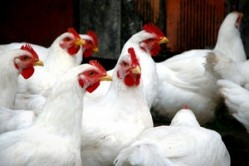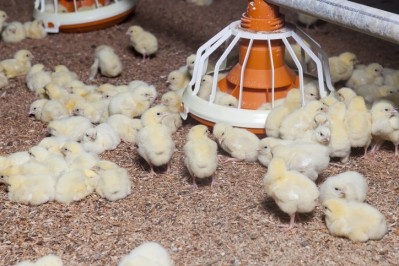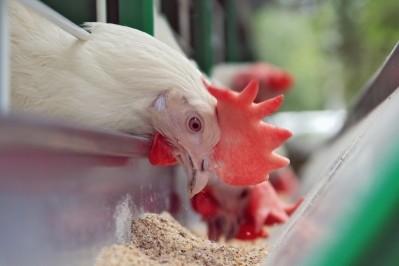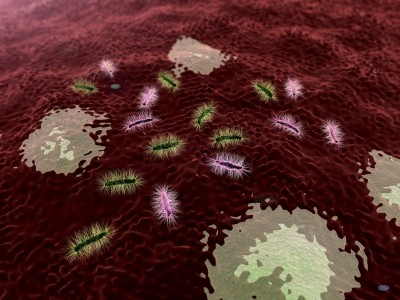Gut health in broilers: is Novus backed research showing the way?

“Oxidative stress, poorly digestible protein and coccidiosis are some examples that can cause gut barrier failure; however, no biomarkers have been described as tools to evaluate that or gut inflammation in broilers.
We report seven potential ones that can be detected in an experimental model of gut barrier failure in birds, two in serum and five in the intestinal mucosa,” said Guillermo Tellez, based at the Department of Poultry Science at the University of Arkansas in the US.
The study, published in the journal, Frontiers in Veterinary Science, was sponsored by Novus International and involved some of its poultry experts.
The team said their results suggest a high non-starch polysaccharides (NSP) diet and a coccidia challenge induced gut barrier failure and inflammation in broilers.
These incidents, they said, were characterized by the rise in endotoxin and α1-acid glycoprotein (AGP) in serum, as well as a hike in interleukin (IL)-8, IL-1β, TGF-β4 and fatty acid-binding protein (FAB) P6 mRNA, and a reduction in FABP2, MUC2, and occludin mRNA in jejunal mucosa of the gut barrier failure (GBF) broiler group compared to the control group.
“These parameters may be utilized as potential biomarkers for gut barrier health in chickens,” concluded the scientists.
Pre and probiotic R&D
The authors said as they now have a better understanding of which biomarkers are relevant, further research is required to assess the effects of chicken enteropathogens, different ingredients or feed additives, such as probiotics and prebiotics, on gut barrier function in broilers.
Tellez told us additional studies are also needed to confirm whether such biomarkers can be applied to other poultry species such as layers or turkeys.
All candidate biomarkers of gut health were selected from an extensive literature review including mainly mammalian species and poultry, said Jeffery Escobar, executive manager of physiology research at Novus. "It is conceivable the evaluated biomarkers could be used in other poultry species; however, their responsiveness to alterations in gut health must be validated in each animal species because not all of the 19 evaluated potential biomarkers were responsive in broilers," he added.
Commenting on the study, Loek de Lange, head of the poultry group at Schothorst Feed Research, said that while the trial was set up very well and the findings were interesting and useful, there was a big difference in performance between the two groups of birds and, in such an outcome, he said, differences in biomarkers will show up easily.
“Good biomarkers should also show significant effects at much smaller differences in feed conversion and body weight gain,” he told us.
The Dutch poultry specialist said it was a pity that no biomarkers on the intestinal microbes were measured in this study.
For biomarker detection, he said, one should know what is normal or optimal at good feed utilization, and what the relationship is between FCR and the biomarkers. “Then you should perform good dose response experiments to study these relationships. To standardize such a research model with variable natural ingredients, one should measure the viscosity in feed and chyme,” said de Lange.
The study outline
The authors said NSPs have been shown to have a detrimental influence on the utilization of nutrients in broilers by increasing digesta viscosity and reducing nutrient digestibility.
Therefore, in an attempt to identify potential biomarkers for gut barrier failure, they fed broilers a high NSP diet in combination with a 2× coccidiosis vaccination to induce gut health challenge.
A total of 144 day-of-hatch Ross 308 male broiler chickens were housed in 24 battery cages with six chicks per cage.
Cages were randomly assigned to either a control group (CON) or gut barrier failure (GBF) group.
During the first 13 days, birds in CON or GBF groups were fed a common corn–soy starter diet.
On day 14, CON chickens were switched to a corn grower diet, and GBF chickens were switched to rye–wheat–barley grower diet.
In addition, on day 21, GBF chickens were orally challenged with a coccidiosis vaccine.
At days 21 and 28, birds were weighed by cage and feed intake was recorded to calculate feed conversion ratio.
At day 28, one chicken from each cage was euthanized to collect intestinal samples for morphometric analysis, blood for serum, and intestinal mucosa scrapings for gene expression.
Results
“Overall performance and feed efficiency was severely affected by a GBF model when compared with CON group at days 21 and 28.
Duodenum of GBF birds had wider villi, longer crypt depth, and higher crypt depth/villi height ratio than CON birds. Similarly, GBF birds had longer crypt depth in jejunum and ileum when compared with CON birds,” reported the scientists.
They found protein levels of endotoxin and AGP in serum, as well as mRNA levels of IL-8, IL-1β, transforming growth factor (TGF)-β4, and FABP 6 were increased in GBF birds compared to CON birds; however, mRNA levels of FABP2, occludin, and mucin 2 (MUC2) were reduced by 34%, 24% and 29%, respectively, in GBF birds compared to CON birds.
“The results from the present study suggest that serum endotoxin and AGP, as well as, gene expression of FABP2, FABP6, IL-8, IL-1β, TGF-β4, occludin, and MUC2 in mucosa may work as potential biomarkers for gut barrier health in chickens,” concluded the authors.
Escobar said as the global livestock sector is looking to migrate away from growth promoting use of antibiotics, it is important to start looking for substitutes: "Supplementation of antibiotics purportedly reduces potential pathogenic or deleterious microbiota in animals. Thus, the basal nutritional needs of the immune and gastrointestinal systems are reduced and more nutrients are available for productive purposes like growth. Before we start looking for alternative solutions to antibiotics, it is important to understand and quantify gut health. Our findings should help researchers all over the world."
Source: Frontiers in Veterinary Science
Published online ahead of print: http://dx.doi.org/10.3389/fvets.2015.00014
Title: Identification of potential biomarkers for gut barrier failure in broiler chickens
Authors: J Chen, G Tellez, J D. Richards and J Escobar















